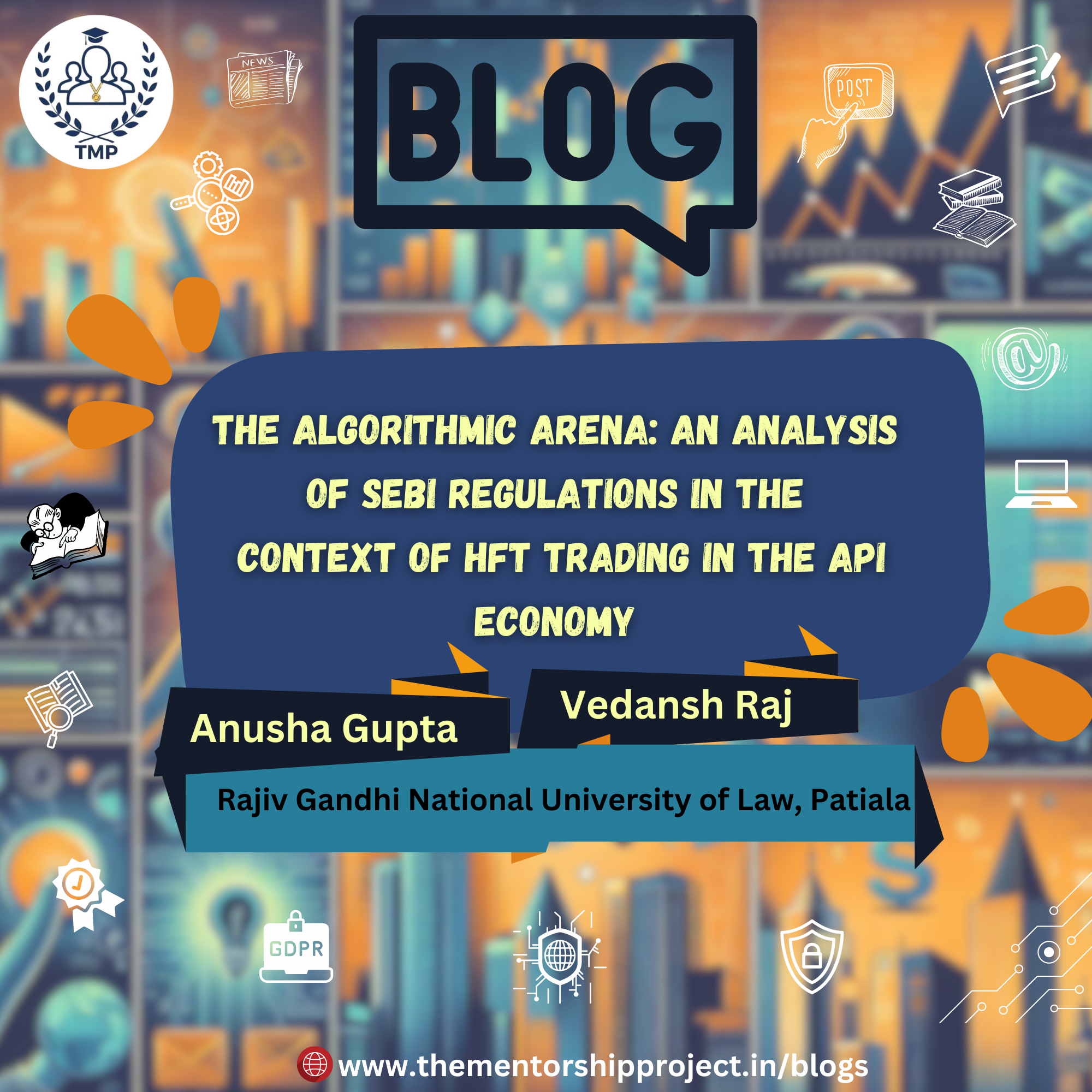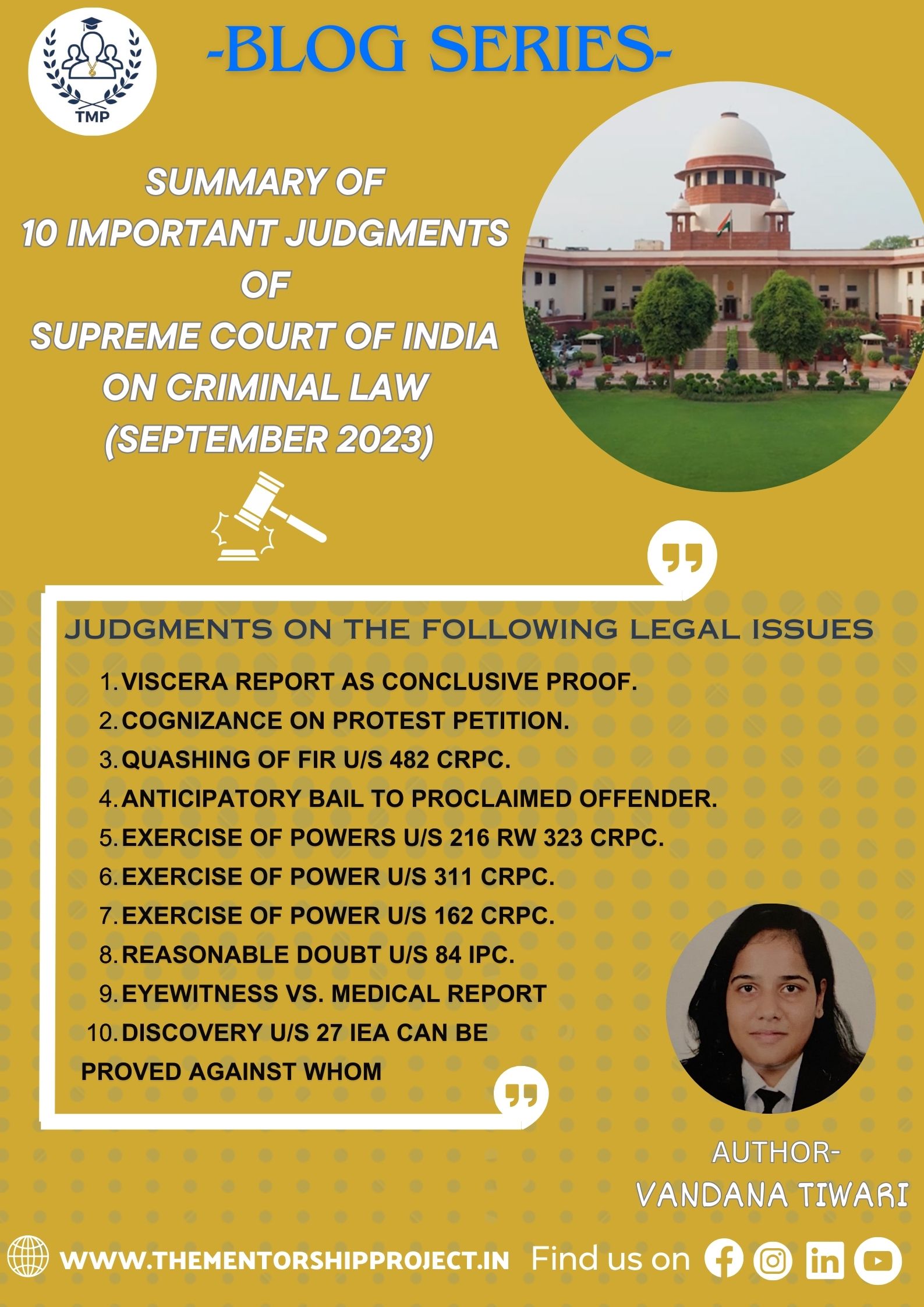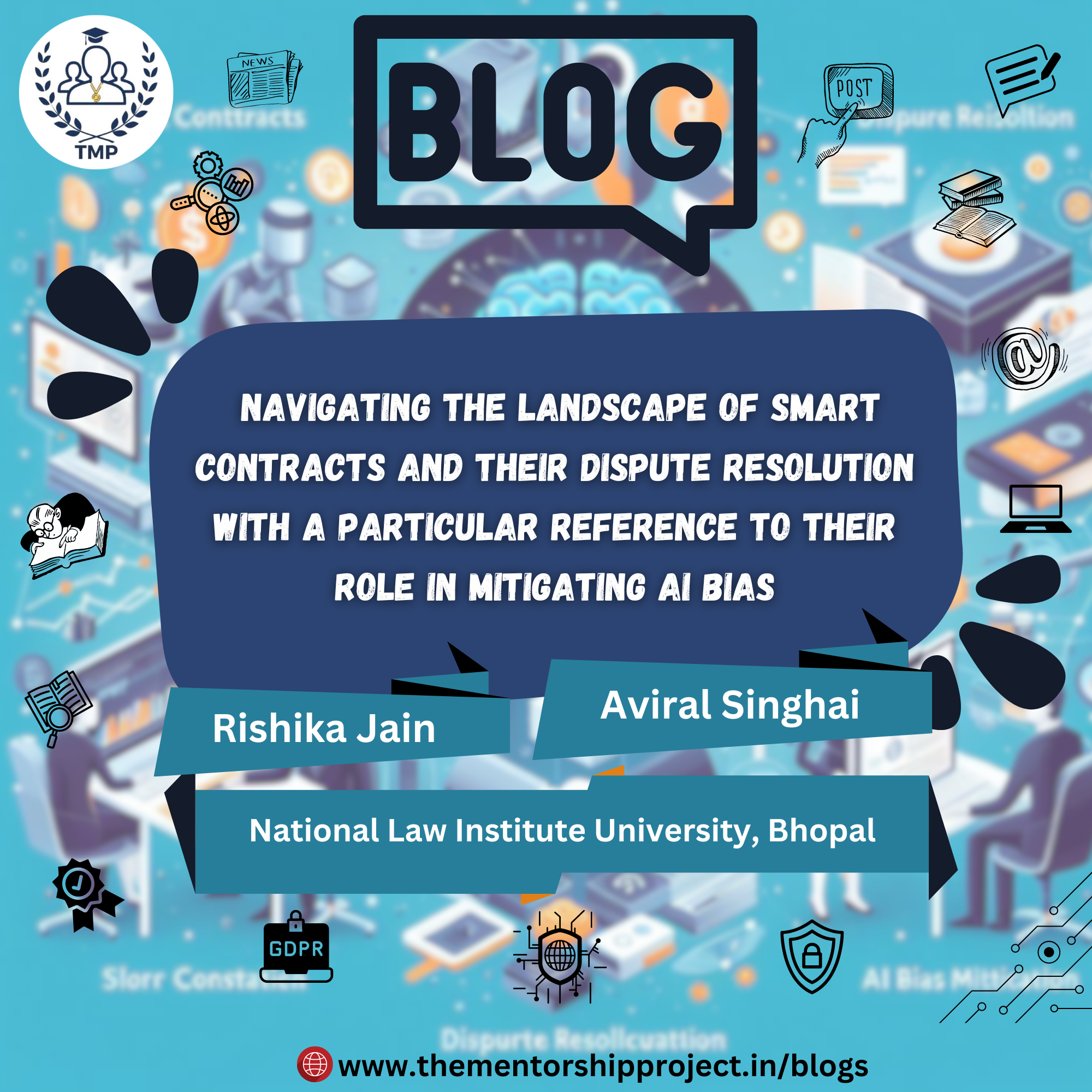April 04 , 2024
EXPLORING THE ALGORITHMIC ARENA: AN ANALYSIS OF SEBI REGULATIONS IN THE CONTEXT OF HFT TRADING IN THE API ECONOMY
Introduction
In the current security market scenario different types of digital programs are available which can be used for the process of obtaining and exchanging data. One of these processes is the Application Programming Interfaces (APIs), which allow the integration of two or more software’s. Technically, these are a format composed of standards and protocols that help a software application to interact with another such program. These allow different software components to communicate and exchange data in a standardized manner.
These systems have now been incorporated into the financial markets. A relatively new concept called API economy has originated. It is “ a model that enhances a company’s bottom line by improving interoperability and thus creating new systems from existing ones ”. This article focuses on how these algorithms have infiltrated the securities markets and the SEBI guidelines related to it.
Algorithmic Trading with Special Reference to HFTs
Securities and Exchange Board of India (SEBI) allowed the Algo trading in 2008. In order to reduce the transactional dues, brokers started to create their own software’s. These retail investors replaced the old system with new method of real time transactions for buying and selling securities. API are similar to employing a broker to buy and sell shares based on specific instructions—much quicker. Due to the execution of orders in seconds, such trades take major price movements in steps.
One of the forms of this type of Algo trading is High-Frequency Trading, popularly known as HFTs. HFT strategies using components like Colocation rely on executing many trades in fractions of a second, often capitalizing on minuscule price differentials. Colocation, is a method of positioning computers owned by traders in the same arena where the main computer servers are placed, helping the HFT firms to know stock prices a split second before the other investing public.
Why in recent times Algo-Trading is on the Rise?
According to National Institute of Financial Management 50% of the whole orders by the client on the National Stock Exchange (NSE) and Bombay Stock Exchange (BSE) are part of algorithmic trading. The very basic reason for the rise of algo-trading is, “Convenience”. Now, traders can involve themselves in various trades without the fear of constant monitoring, of the prices of stocks. Algo trading is usually done in huge sizes and this high-frequency trade requires continuous practice breaking the full trade into small parts and performing the trade at specific time intervals. For example, A trade of 1 lakh shares has to be executed for which trading instructions have been set up. The trading instructions are that every 30 seconds, 10,000 shares will be executed for trade.
Various factors contributed to the rise of algo- trading, these are as follows; Firstly, algo trading provides an automated feature that makes the entire process of buying and selling trades to be executed in a step-by-step process. Now, a trader can set up identifications and automate the execution of orders when it matches the set-up condition. Secondly, the probability of success increases in trading which is done by tools that have technologies with them, now the trader can invest after completely examining all the market conditions. Thirdly, the algo trading is executed in split seconds, which makes this process convenient for the traders. In a fast-moving market where the prices of stocks are highly volatile, a system that executes itself at the right time will increase the profits for the trader. Fourthly, there is no human interference in transactions related to algo trading. This gives a sense of confidence about less error. The system is designed in such a way that it can calculate the best results within split seconds.
To summarise, algorithmic trading in India improves automation, gives real-time data access, assures rapid order execution, allows for customisation, and decreases latency, all of which contribute to algorithmic trading's growing popularity in the nation. Brokers acknowledge it as a tool for experienced traders.
SEBI’s Stance
Algo trading holds for 10%-13% of overall market turnover in general. When the stock market crashed in March 2020, this figure increased to over 25%. This might have happened because of the ‘contagion effect’, in which algos spiralled downward. While this is only speculative, SEBI is concerned that these vulnerabilities might lead to financial instability in an economy caused by rogue algos.
The consultation paper issued by SEBI, titled, “Algorithmic Trading by Retail Investors”, talks about extant provisions, algo trading in India and the proposed framework by SEBI. This recommends that, all algos must be authorised by the exchange. Each algo strategy must be certified, whether used by a broker or a customer. According to the market regulator, any orders issued by an API should be designated as algo orders and subject to broker control. It allows APIs for algo trading, with a unique ID assigned by SEBI after approval. Furthermore, SEBI would like to develop a mechanism that assures only approved logos are employed in trades.
SEBI also encourages brokerages to employ technological tools to ensure that adequate controls are in place to prevent unauthorised algorithm tweaking. Further, the broker will also be in control of any algos generated by its APIs, as well as evaluating investors' eligibility before enabling them to utilise the algo facility. Lastly, brokers will be expected to give a full report on algorithm checks they have done throughout the financial year to the watchdog in the form of, an audit report.
Need for the Regulations by SEBI
Algorithmic trading is not for everyone. Unregulated/unapproved algos are a concern to the market they can pose a serious risk and be used as a tool for systematic market manipulation. Since algo trading depends on the automated commands which are set by the traders if these sets of commands are not executed in the set manner, then repercussions can be dangerous. One such event has been observed, a flash crash occurred, at the BSE Muhurat Session in 2011. A looping algorithm continued repeating transactions in the Sensex futures contract, resulting in deals of 25,000 crore from one member in that session. All Sensex futures trades for that session had to be cancelled.
As mentioned in, Chapter VA of the Securities and Exchange Board of India Act, 1992. Section 12A, says that no deviceshould be directly or indirectly be used to defraud the investors in securities which are listed on stock exchange. Trading companies cannot attract investors using manipulative algorithms for trading. The use of algorithm in trading raised concerns about uneven access and inequity between non-HFT participants. It highlights that HFTs profit on order flow data provided by institutional investors. HFTs are effectively cherry-picking the best part of an institutional investor's basic study, but they benefit regardless of how accurate the institutional investor's assessment is. The reason for this win is that the computers are more well-versed with market patterns compared to investors.
To bring non-algo players at par with other players in the field of trading, SEBI is considering eliminating "fleeting orders," This backs up the mechanism named “Minimum Resting Time”, which specifies a stock order cannot be altered or cancelled by the stock exchange until a certain time period. Countries such as the United Kingdom have installed such systems. Furthermore, the addition of a resting time of 500 milliseconds or more might reduce latency to that of a non-algorithmic trader.
Today's financial markets rely on modern technology that is constantly being democratised, and hence requires a reformation that can be brought by the market regulator SEBI. Setting up the Minimum Order-to-Trade Ratio, to prevent excessive order generation and to maintain transparency in the share market regular audits of these systems must be mandated by the SEBI.
Conclusion
The technological advancement in India leads to the growth of APIs in the Indian economy and this gives rise to algorithmic trading in the financial market. With the development of High Frequency Trading the Indian Market flourished with securities exchange and increased the market turnover. SEBI needs to regulate these areas as these pose the risk of manipulation and exploitation of the stock exchange system of India.
Autonomous regulatory body, SEBI has devised various methods to counter these evils from the market some of these are authorization of the algo devices, certification and surveillance of brokers involved in algo trading. These frameworks are listed in the consultation document and various research conducted by the watchdog. This will guarantee a level playing field for all players in India’s expanding algorithmic trading market.
However, if a framework such as, “Minimum Resting time”, is adopted, it may cause problems for algorithms that trade in multiple markets, for example in Singapore, USA, etc. But this can be resolved by adopting various measures by the algo trading companies and investors. The investors have to recalibrate their systems to match the latency which is going to be introduced into the market.
Authors: Anusha Gupta & Vedansh Raj (Both the authors are pursuing Law from RGNUL, Patiala)
Disclaimer:
The views expressed in this article are personal. The information provided in this article is for educational and informational purposes only. It is not intended to be investment advice or a recommendation to engage in any specific trading activities. Readers are advised to conduct their own research and consult with a qualified financial advisor before making any investment decisions. The author and publisher do not assume any responsibility or liability for any losses or damages that may result from the use of the information presented herein. Additionally, regulations and market conditions may change over time, so readers are encouraged to verify the accuracy and relevance of the content at the time of reading.








